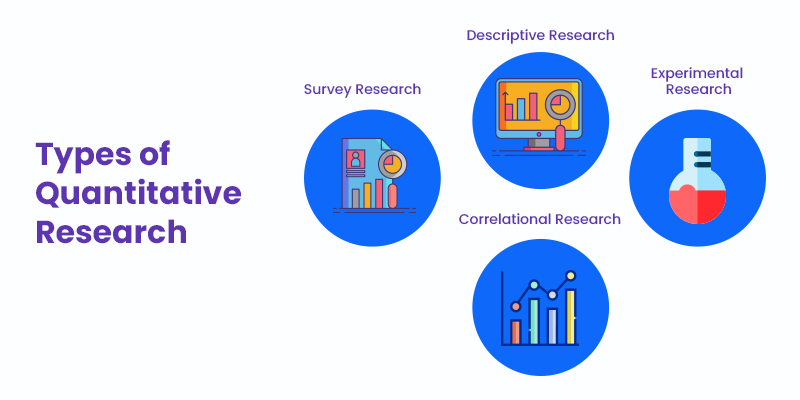In today’s competitive business landscape, understanding consumer behavior is paramount for businesses striving to stay ahead. Quantitative market research methods offer a structured approach to unraveling consumer insights, enabling companies to make informed decisions. From surveys to experiments and observational studies, these methods provide valuable data for strategic planning and product development.
Introduction to Quantitative Market Research

Quantitative market research methods involve the systematic collection and analysis of numerical data relating to consumer preferences, purchasing habits, and market trends. Unlike qualitative methods that delve into the underlying reasons and motivations, quantitative research focuses on measurable data points.
Importance of Quantitative Market Research
Quantitative market research methods serve as a cornerstone for evidence-based decision-making. By quantifying consumer preferences and behaviors, businesses can identify market opportunities, assess demand for products or services, and gauge the effectiveness of marketing campaigns.
Types of Quantitative Market Research Methods
1. Surveys
Surveys represent one of the most common quantitative research methods. Through questionnaires and structured interviews, businesses can gather data from a large sample of respondents efficiently.
2. Experiments
Experiments involve manipulating variables to observe their effects on consumer behavior. A/B testing and controlled experiments are widely used to assess the impact of changes in product features or pricing strategies.
3. Observational Research
Observational research entails the systematic observation of consumer behavior in natural settings. By studying purchasing patterns and interaction behaviors, businesses can uncover valuable insights into consumer preferences.
Designing a Quantitative Market Research Study
Successful quantitative research begins with meticulous planning and design.
1. Defining Objectives
Clearly defined research objectives ensure that the study addresses pertinent questions and generates actionable insights.
2. Selecting Sample Population
The selection of a representative sample population is critical to the validity and generalizability of research findings.
3. Choosing Data Collection Methods
The choice of data collection methods depends on factors such as target audience demographics, research objectives, and budget constraints.
Conducting Surveys for Quantitative Marketing Research
Surveys offer a versatile means of gathering quantitative data from a diverse range of respondents.
1. Online Surveys
Online surveys provide cost-effective and efficient data collection methods, reaching a global audience with minimal resources.
2. Telephone Surveys
Telephone surveys enable researchers to engage with respondents directly, obtaining real-time feedback and insights.
3. In-person Surveys
In-person surveys allow for deeper engagement with respondents, particularly useful for complex or sensitive topics.
Implementing Experiments in Quantitative Marketing Research
Experiments allow researchers to establish causal relationships between variables.
1. A/B Testing
A/B testing involves comparing two or more versions of a product or marketing campaign to determine which performs better.
2. Controlled Experiments
Controlled experiments enable researchers to isolate and manipulate variables under controlled conditions, yielding reliable insights.
Utilizing Observational Research in Quantitative Marketing Research
Observational research provides valuable insights into consumer behavior without direct interaction.
1. Tracking Consumer Behavior
By tracking online browsing patterns and purchase histories, businesses can gain insights into consumer preferences and decision-making processes.
2. Analyzing Sales Data
Analyzing sales data allows businesses to identify trends, forecast demand, and optimize inventory management strategies.
Data Analysis Techniques in Quantitative Marketing Research
Data analysis is a crucial step in deriving meaningful insights from quantitative research.
1. Descriptive Statistics
Descriptive statistics summarize and describe the characteristics of a dataset, providing insights into central tendencies and variability.
2. Inferential Statistics
Inferential statistics enable researchers to draw inferences and make predictions about a population based on sample data.
3. Regression Analysis
Regression analysis examines the relationship between independent and dependent variables, identifying patterns and predicting future outcomes.
Challenges and Limitations
Despite its benefits, quantitative market research is not without challenges.
1. Sample Bias
Sample bias occurs when the sample population does not accurately represent the target population, leading to skewed results.
2. Data Validity
Ensuring the validity and reliability of data is essential to the credibility of research findings.
3. Cost and Time Constraints
Conducting comprehensive quantitative research can be time-consuming and resource-intensive, especially for small businesses with limited budgets.
Best Practices for Effective Quantitative Marketing Research
Adhering to best practices is essential for maximizing the value of quantitative market research.
1. Ensuring Sample Representativeness
Striving for a diverse and representative sample population enhances the generalizability of research findings.
2. Validating Data Collection Instruments
Thoroughly validating survey instruments and data collection methods minimizes errors and ensures data accuracy.
3. Conducting Robust Data Analysis
Employing appropriate statistical techniques and software tools facilitates rigorous data analysis and interpretation.
Future Trends
Advancements in technology and data analytics are poised to reshape the landscape of quantitative market research, offering new opportunities for insight generation and decision-making.
Conclusion
Quantitative market research methods empower businesses to decipher consumer preferences, anticipate market trends, and make data-driven decisions. By embracing diverse research methodologies and best practices, organizations can unlock valuable insights that drive growth and innovation. To experience the power of advanced market research technologies firsthand and revolutionize your approach to consumer insights, request a demo from AIM Technologies today.
FAQs
What distinguishes quantitative market research from qualitative research?
- Quantitative market research involves the collection and analysis of numerical data, focusing on measurable metrics and statistical analysis. In contrast, qualitative research delves into the underlying reasons, motivations, and perceptions through open-ended questions and subjective analysis.
How do businesses ensure the reliability of survey data in quantitative research?
- Businesses can enhance the reliability of survey data by employing rigorous sampling techniques, designing well-structured questionnaires, conducting pilot tests, and ensuring respondent anonymity to encourage honest responses.
What role does statistical analysis play in quantitative market research?
- Statistical analysis enables researchers to uncover patterns, relationships, and trends within the data. It facilitates hypothesis testing, predictive modeling, and the identification of significant insights that drive strategic decision-making.
Can small businesses benefit from conducting quantitative market research?
- Absolutely! While large corporations often have dedicated research teams, small businesses can leverage cost-effective tools and methodologies to conduct quantitative market research. It allows them to understand their target audience, assess market demand, and optimize their marketing strategies for growth.
How are emerging technologies shaping the future of quantitative research methodologies?
- Emerging technologies such as artificial intelligence, machine learning, and big data analytics are revolutionizing quantitative research methodologies. They enable faster data processing, predictive modeling, and real-time insights, empowering businesses to make informed decisions in an increasingly dynamic marketplace.




